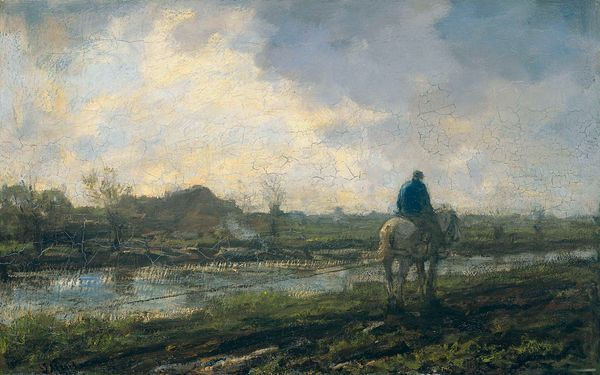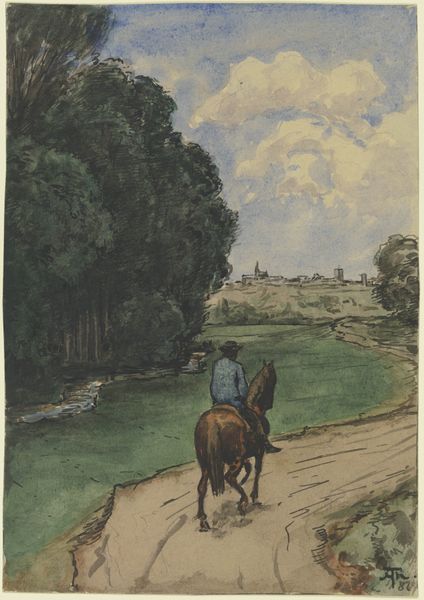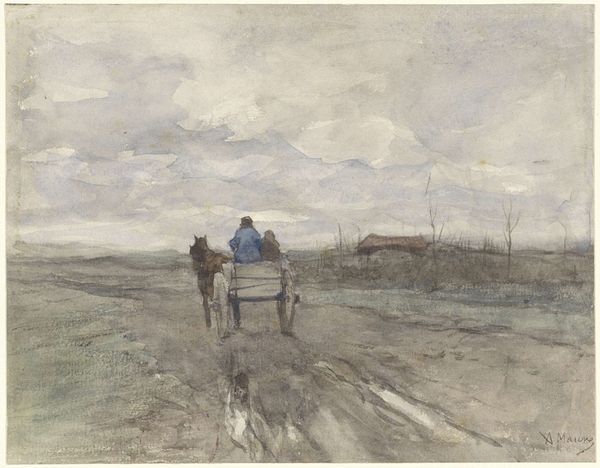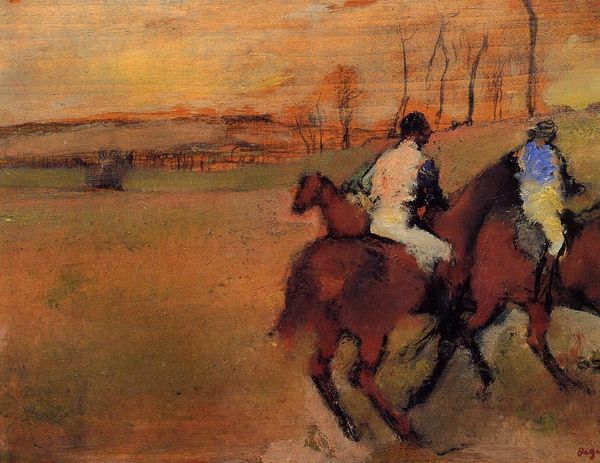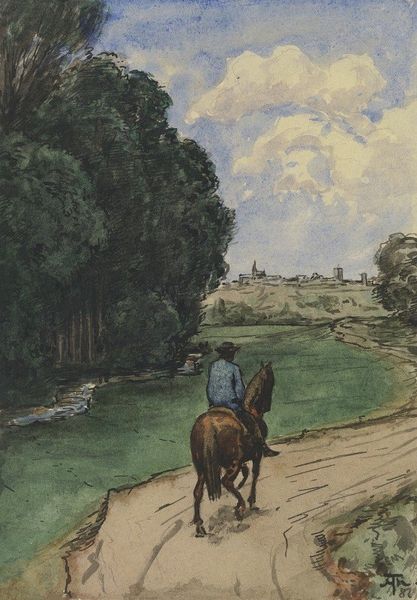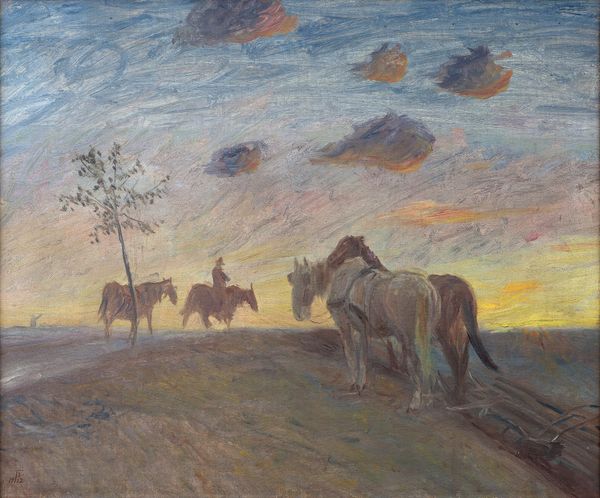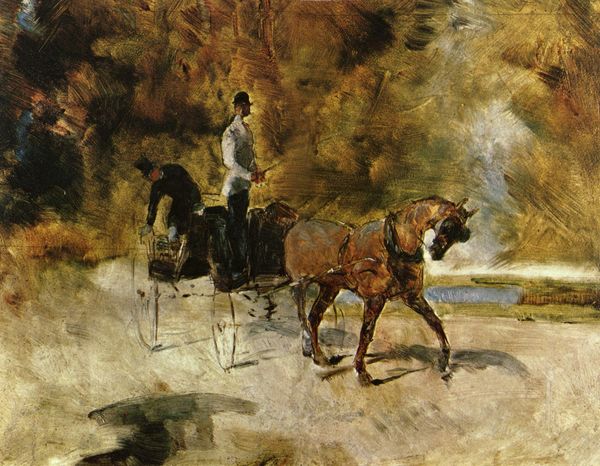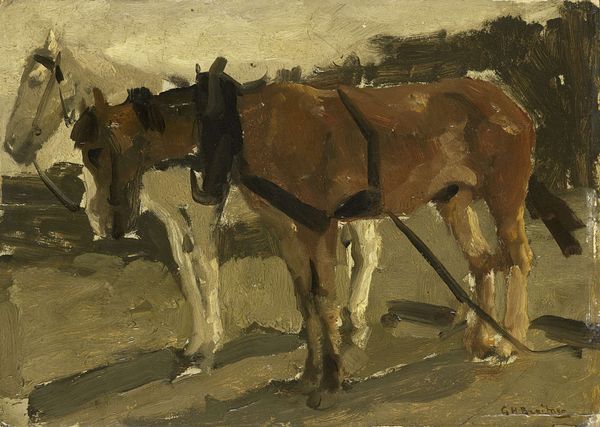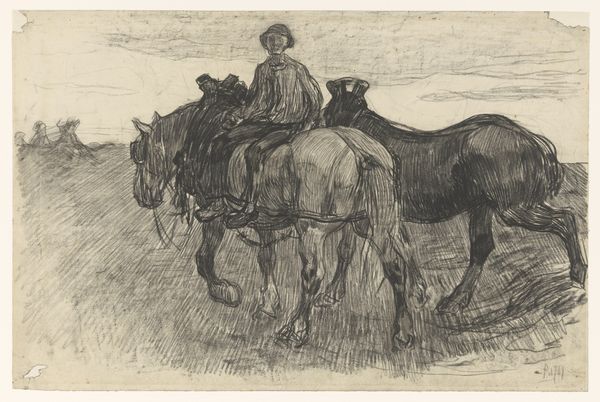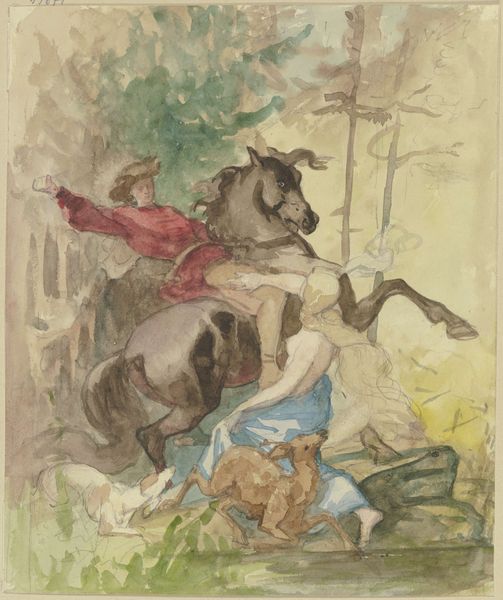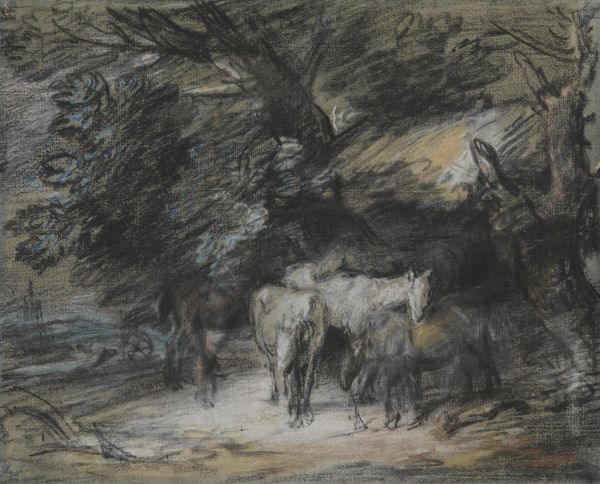
plein-air, watercolor
#
dutch-golden-age
#
impressionism
#
plein-air
#
landscape
#
oil painting
#
watercolor
#
genre-painting
#
watercolor
#
realism
Dimensions: height 377 mm, width 269 mm
Copyright: Rijks Museum: Open Domain
Editor: Here we have Jacob Maris’ "Jager te paard op het jaagpad," created sometime between 1847 and 1899. It’s currently held at the Rijksmuseum. I’m immediately drawn to the looseness of the watercolor. How would you approach interpreting this piece? Curator: Consider the production of images during this period. Watercolor allowed for relatively quick, and portable image-making compared to traditional oils and large canvases that were then popular in formal Salon exhibitions. Here, the artist seemingly captures a momentary scene and perhaps even the activity or job of the hunter as an economic exchange rather than a romantic idea. Editor: So you see the medium as key to understanding its content? It makes me think, what were the social associations of watercolors at that time? Curator: Exactly. Were watercolors considered ‘serious’ art? And how did this impact what one could express with it? Who was making and consuming this imagery and to what purposes? We see landscape employed not simply as idyllic backdrop, but connected to labour. Notice, for example, the weight carried in the low-slung posture of the beast and the simple forms suggesting the clothing and burden of the rider. It is only a slight suggestion, however. Editor: I see it now; that focus on the material process changes how we view even the romantic subject matter of the painting. Curator: Precisely! Maris asks us to reconsider not just what we see, but *how* we see. Art-making here acts as a window into historical processes beyond purely aesthetic concerns. Editor: Thanks. It is really interesting to consider beyond its aesthetic and more the material factors behind it. Curator: And how those factors in turn shaped its aesthetic qualities. A fascinating cycle of influence to be sure.
Comments
No comments
Be the first to comment and join the conversation on the ultimate creative platform.
